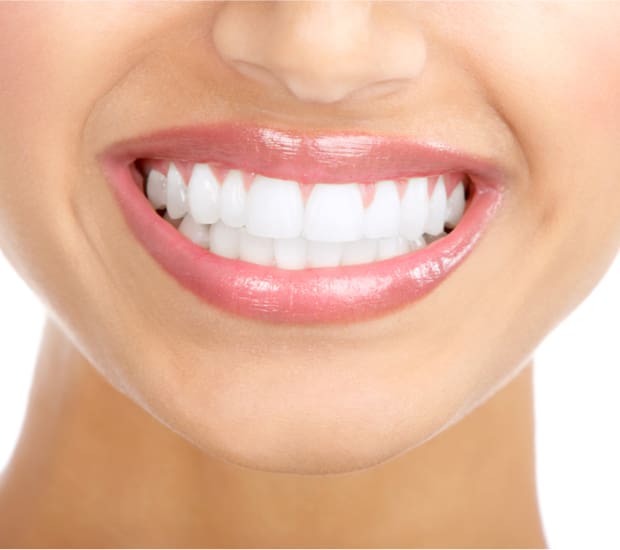Dental Bonding Miami, FL
At Dr. Rita The Smile Designer, we can complete a dental bonding procedure to restore your damaged tooth or to make aesthetic changes that will improve the appearance of your smile. This restorative and cosmetic dentistry solution is affordable, dependable, and long-lasting. It is also non-invasive, making it an ideal restoration for children and adults who prefer a more conservative approach to alternative procedures like dental veneers and crowns. For patients who are not familiar with dental bonding,our dental team would be happy to provide education about how dependable it can be as a cosmetic and restorative dentistry solution. If you want to learn more about restorative bonding, we encourage you to call our dental office at (305) 858-0505. We can meet with you, examine your teeth, and discuss how a bonding procedure can help improve your smile.
Cosmetic Dental Bonding: A Natural-Looking Solution
If you damage your tooth and are searching for a natural-looking restoration, consider restorative bonding. In this procedure, we apply a tooth-colored resin material to your tooth, shaping it until it matches the form and shade of your naturally occurring dentition. We then harden it in place with a special dental light, effectively bonding it to the tooth. At Dr. Rita The Smile Designer, we will ensure that, regardless of the type of restoration you receive, your smile will look amazing.
Frequently Asked Questions About Restorative Bonding
Q. Can dental cosmetic bonding fix my child's chipped tooth?
A. Yes, it can. As a cosmetic dentist, we can restore your child's chipped tooth by applying resin to the affected area and shaping it until it matches their natural dentition. We will use every tool available to match the shade of the resin to the child's surrounding teeth, enabling it to blend in as best as possible. Most people will not notice a difference between the bonding material and the other teeth. Once a growing child reaches maturity, recommendations to revisit the dentist are made. During this time, the original restoration may need to be replaced so as to better resemble the more mature form, position, and shade of the now-grown tooth.
Q. Will a tooth bonding procedure be uncomfortable?
A. Not at all. Bonding is a non-invasive procedure and one of the most comfortable restorations you can receive. In order to complete the restoration or to make cosmetic improvements, the tooth may need to be scored slightly in preparation for the procedure. Once prepared, the tooth is conditioned using special bonding primers and adhesives. When ready, we will apply specially chosen resin material that matches the shade of your teeth. Upon doing so, the resin is layered into the tooth preparation while simultaneously shaping it so as to create a natural-appearing and seamless restoration. Since your tooth structure remains intact, you will be comfortable during the procedure. In fact, most people do not need anesthesia or pain medication for the bonding procedure.
Q. Can Restorative bonding be used to fill gaps in between my teeth?
A. Yes, it can. When you visit our Miami dental office, we can close small gaps between your teeth using this simple procedure. When indicated, the bonding procedure can be an alternative to placing veneers or crowns or undergoing an orthodontic procedure. Since we can typically complete cosmetic bonding in one dental visit, it is the fastest way to complete this transformation.
Q. Can it reshape my teeth?
A. Yes. Bonding is an excellent way to reshape your teeth. We can use it to lengthen your teeth or to change their width. By doing so, your teeth can appear more uniform while eliminating the inconsistencies between them. It only takes 30 to 60 minutes per tooth; although techniques are sensitive, cosmetic recontouring using bonding techniques is much more predictable and patient-friendly than people may believe.
Q. Will cosmetic bonding help if my teeth are stained?
A. Yes, if you have stains on your teeth, we can use bonding techniques to cover them. We suggest trying a whitening procedure first since this can improve the appearance of your smile with relative ease. There are times, however, when a whitening procedure is not enough to remove some of the deeper or more significant stains. This is where restorative bonding can be particularly useful. We can place the resin material on top of your stained tooth or teeth in order to improve their appearance. When you visit our Florida dental office, we can discuss the available options with you and complete the procedure in as little as one visit.
Q. Is a tooth bonding procedure reversible?
A. Yes, since we apply bonding without removing the enamel on your teeth, the process is reversible. If you want to change course and restore your teeth or change their appearance with an alternative procedure in the future, you can. While most of our patients are satisfied with the appearance of their teeth after the bonding procedure, some use this as a temporary solution while considering more long-term improvements.
Q. Is dental bonding affordable?
A. If budget is a concern, dental bonding is an affordable and viable option. Since we place and harden bonding material in our office, there is no need for participation from the dental lab. This makes the process more cost-effective than getting dental veneers or crowns. If you are weighing your options between the three, let us know. We would be happy to examine your dentition so as to provide you with the indicated options and associated fees involved. For more information, call 3058580505 and schedule a consultation.
Q. How long will it last?
A. Restorative bonding procedure is durable, natural-looking, and effective. There is no set time frame for how long the resin will last. It can last for several decades or several years. Taking care of your teeth will help to increase its longevity. Be sure to brush with a soft or electric toothbrush so as to not risk eroding your teeth and your restoration. You need to also avoid eating food that is too acidic, while also avoiding any activities that can break or chip your teeth. While bonding material is strong and durable, it is not as strong as a dental crown can be. If you are looking for a longer-lasting restoration, then you may want to consider that option as well.
Check out what others are saying about our dental services on Yelp: Dental Bonding Miami
Questions Answered on This Page
Q. Is dental bonding uncomfortable?
Q. Can dental bonding fix my child’s chipped tooth?
Q. How long will the dental bonding last?
People Also Ask
Q. Why do people wear mouth guards?
Overall, dental bonding can be an effective procedure for patients. Your teeth will look both natural and beautiful once restored. To learn more or to find out if this procedure is right for you, call our Miami dental office at (305) 858-0505.
Definition of Dental Terminology
- Cosmetic Dentistry
- Cosmetic dentistry combines comprehensive dental principles with artistic sensibility to design and create optimally healthy and beautiful restorations intended to enhance the appearance of one’s smile while preserving ideal function and form.
- Decay
- Tooth decay is when the enamel of the tooth begins to breakdown as a result of bacterial invasion, causing an acidic induced erosion of healthy tooth structure.
- Dental Caries
- Dental caries are also known as cavities and can result from a lack of proper oral hygiene. A synonym of “decay”, and also called “cavities”, caries is a breakdown of teeth due to acids made by bacteria. The cavities may be a number of different colors from yellow to black.
- Dental Checkup
- A comprehensive oral examination that focuses on the evaluation of hard and soft oral structures including, but not limited to, the teeth, gums, jaw bone, jaw joint, bite, and cosmetic aspects of the smile. Both clinical and radiographic information is used to assess the status of the oral health while detecting any form of pathology that may affect the health of the oral cavity and its associated structures.
- Dental Filling
- A dental filling involves restoring the damaged structure of a tooth by using tooth colored resins or porcelain materials to restore natural form, function, and aesthetics to the dentition.
- Dental Prophylaxis
- A dental prophylaxis is a professional and detailed cleaning that involves the removal of plaque, calculus and stains from the teeth,thereby reducing the risks of inflammation and breakdown of the dentitions supporting structures.
- Dental Sealants
- Dental sealants are preventative restorations that contain a resinous material that is applied to the deep pits and fissures detected on the chewing surfaces of newly erupted teeth. These are used to help prevent dental caries from developing in children’s permanent molars and premolars.
- Dentist
- A dentist, also known as a dental surgeon, is a doctor who specializes in the diagnosis, prevention, and treatment of diseases and conditions of the oral cavity.
- Gingivitis
- Gingivitis is the inflammation of gum tissue that results from plaque, other infections in the mouth, and poor oral hygiene. Gingivitis can be a precursor to more advanced forms of periodontal disease if it is not controlled and reversed. Signs of gingivitis include soft tissue redness,inflammation, and bleeding. Proper brushing, flossing, and prevention helps to prevent and reverse signs of early gum disease.
- Preventive Dentistry
- Preventive dentistry focuses on education, modalities, and treatment designed to achieve and maintain optimal oral health, described as one free of structural, bacterial, and restorative breakdown.
- Tartar
- Tartar forms when plaque builds up on the surface of the teeth and calcifies into a hard surface that is much more difficult to remove. Its presence will require professional dental debridement and education on its prevention. Daily removal of plaque by proper brushing and flossing habits will reduce the incidence of tartar and the pathology associated with its presence.
- Tooth Enamel
- Tooth enamel is the outermost protective layer of the tooth. Enamel is white and visible. Its hard composition protects the underlying layers, dentin and pulp, respectively.
Back to top of Dental Bonding




